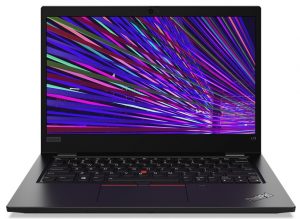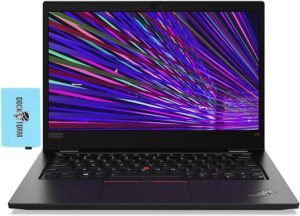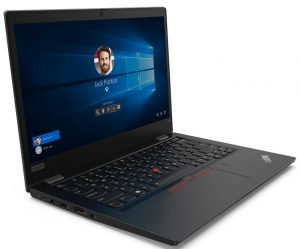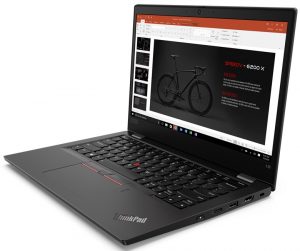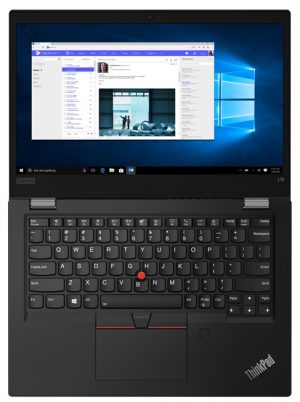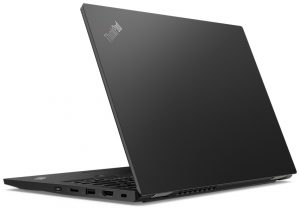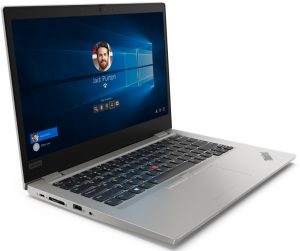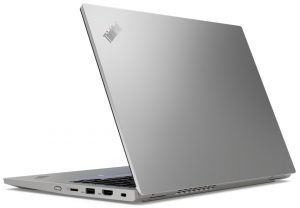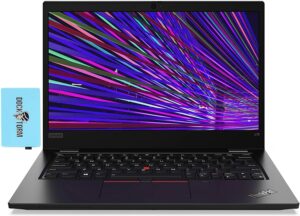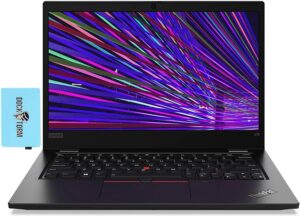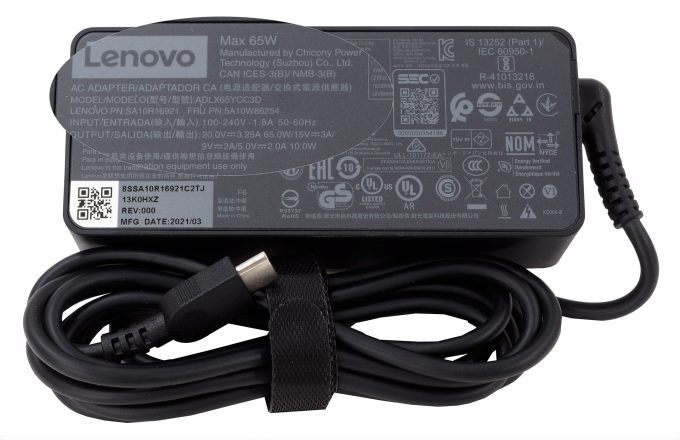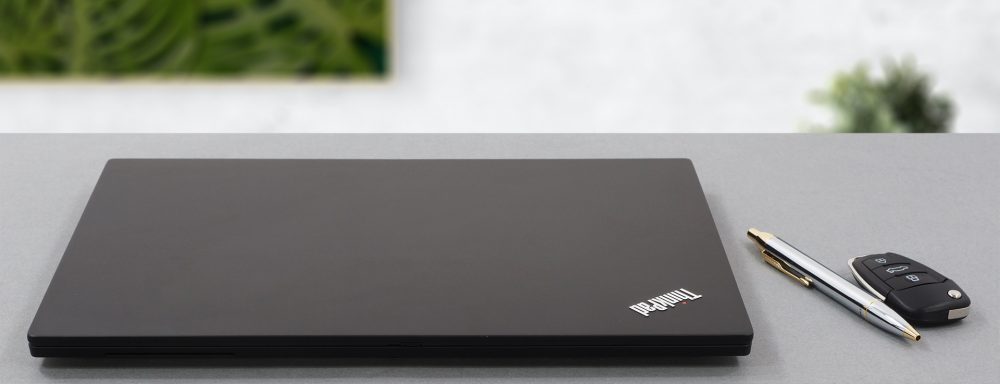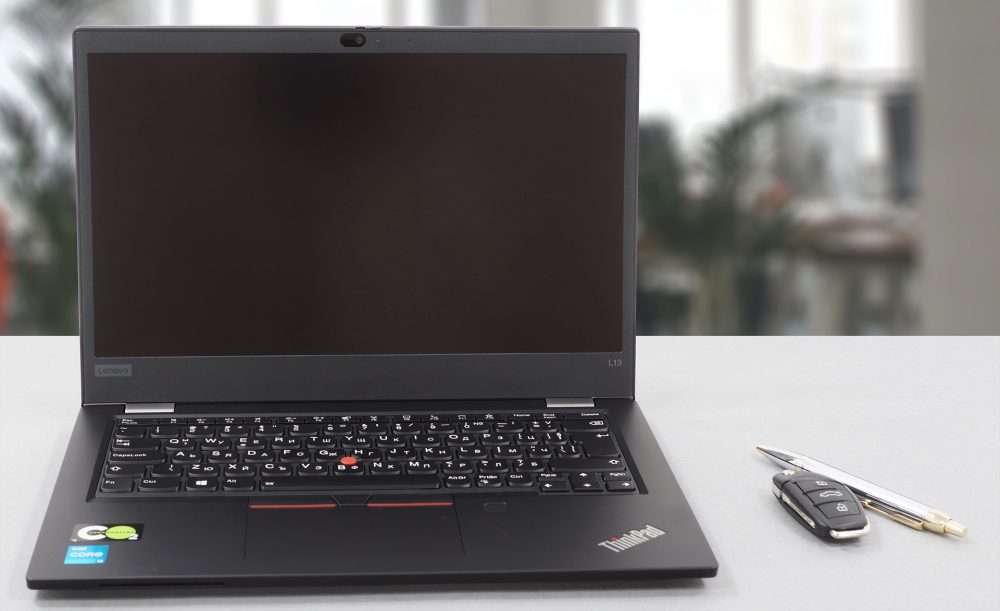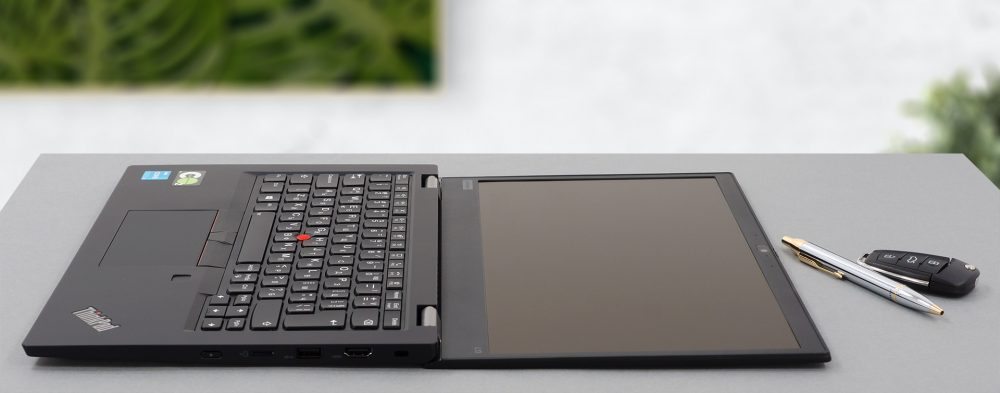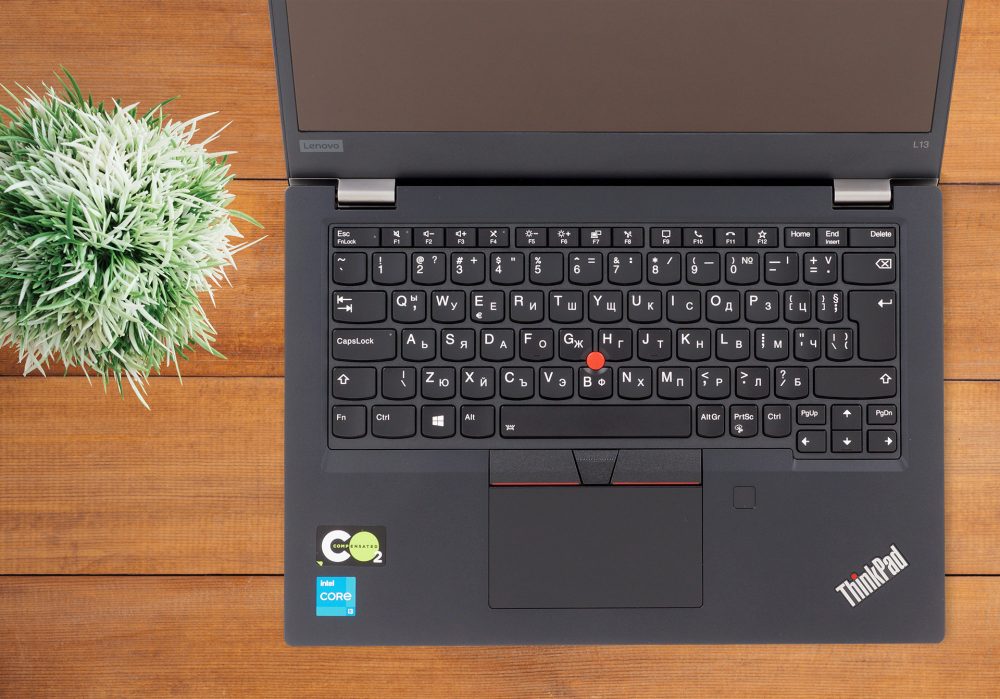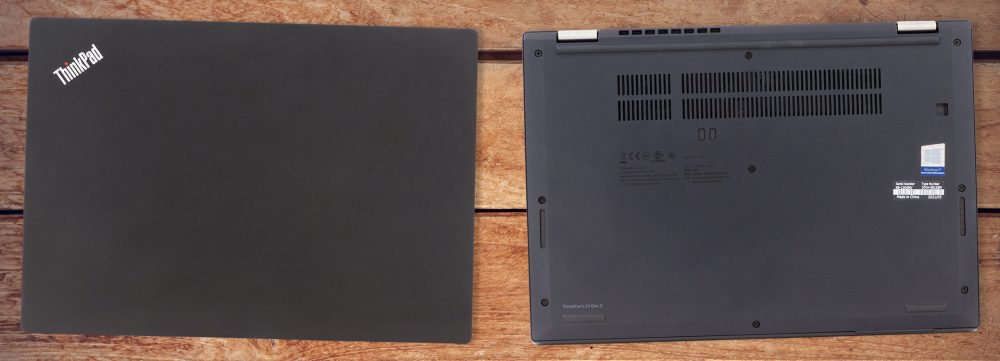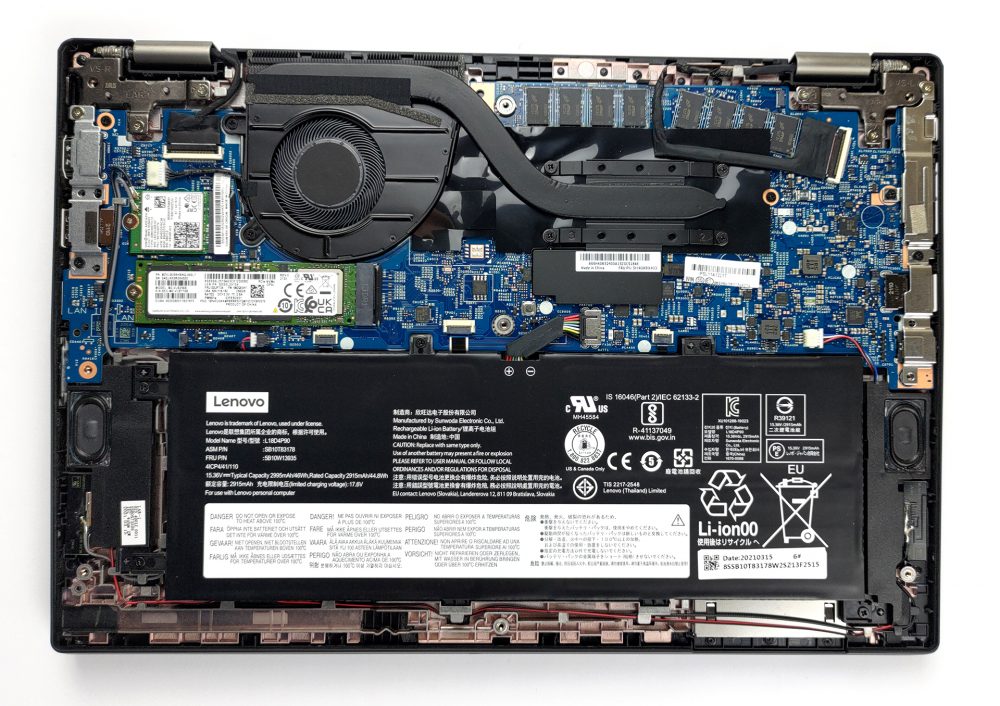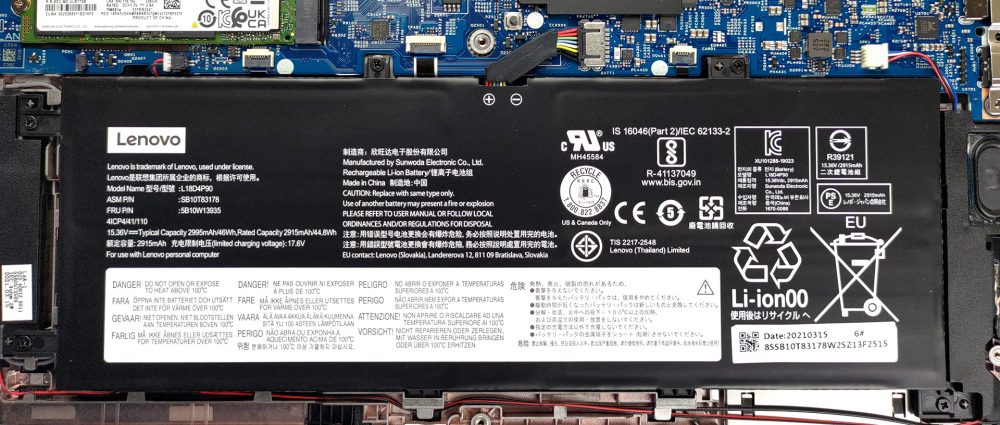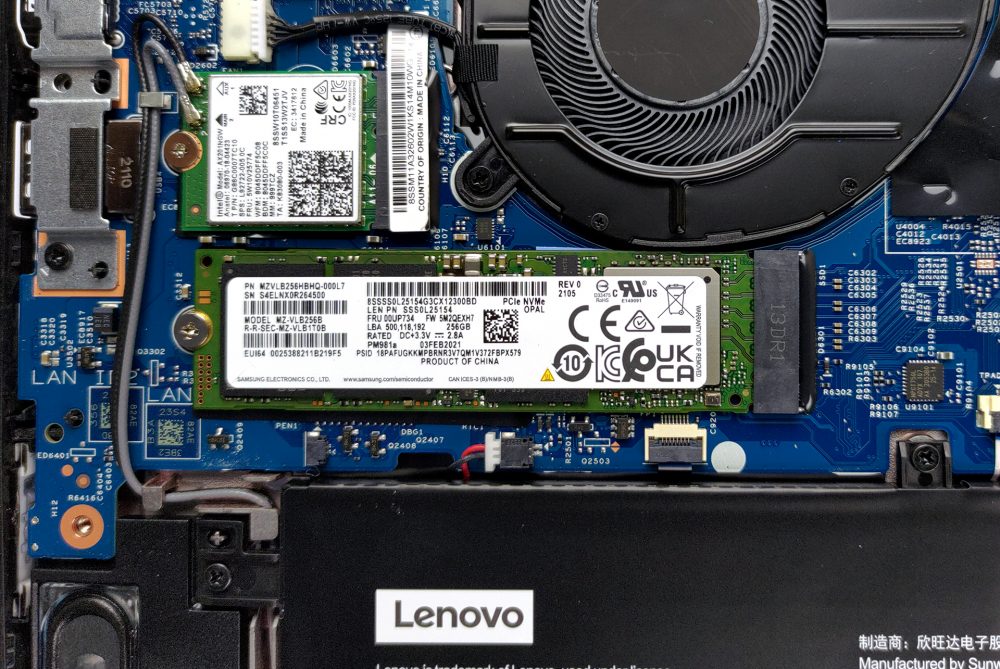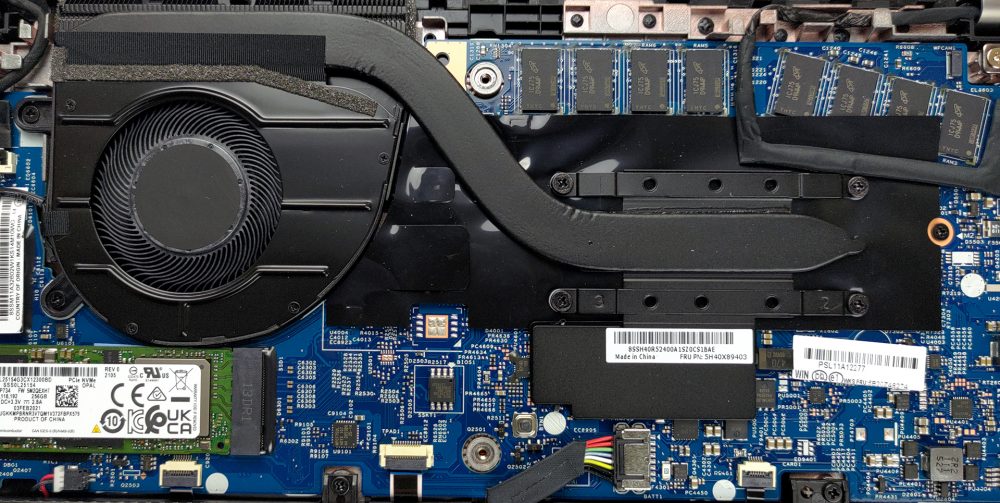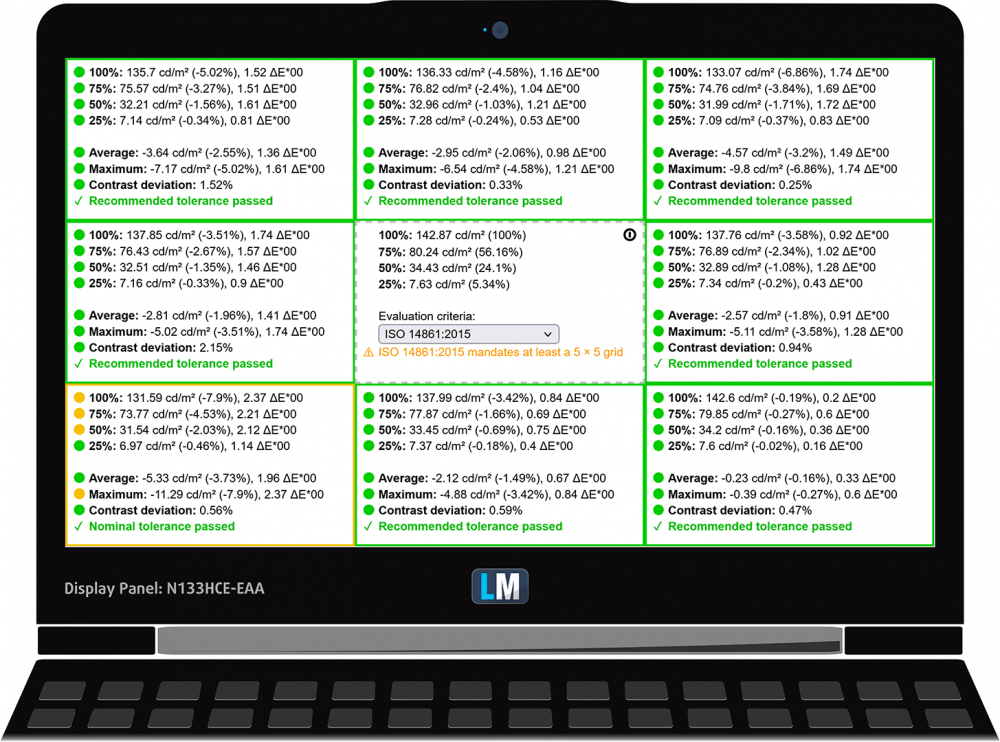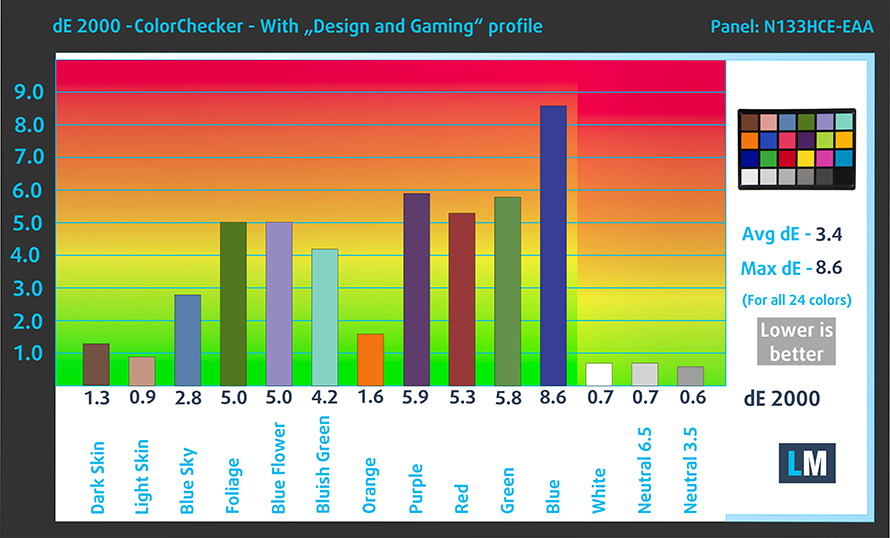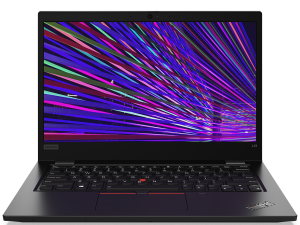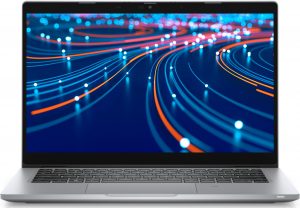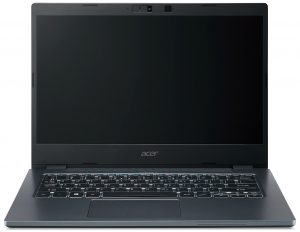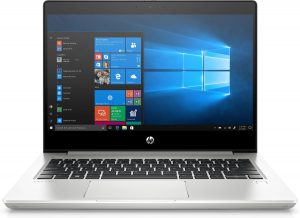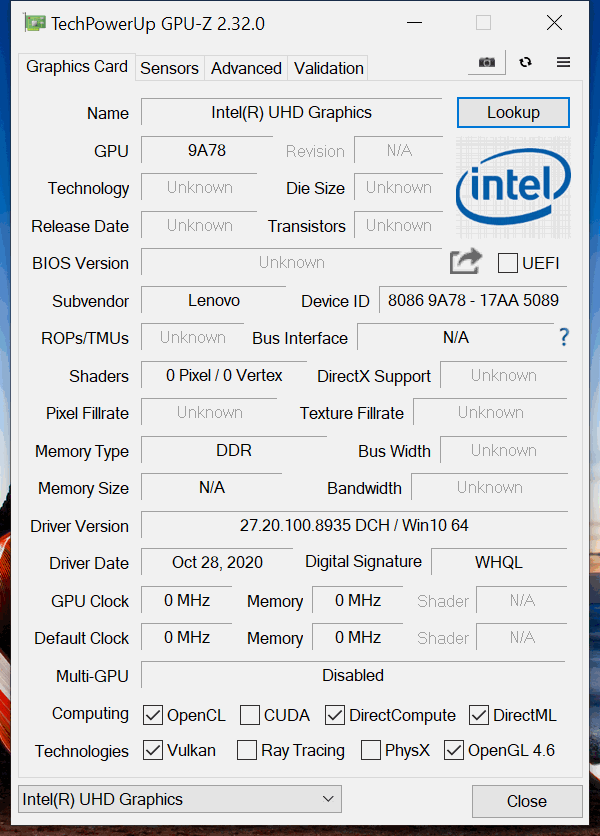Lenovo ThinkPad L13 Gen 2 review – aimed at students and professionals
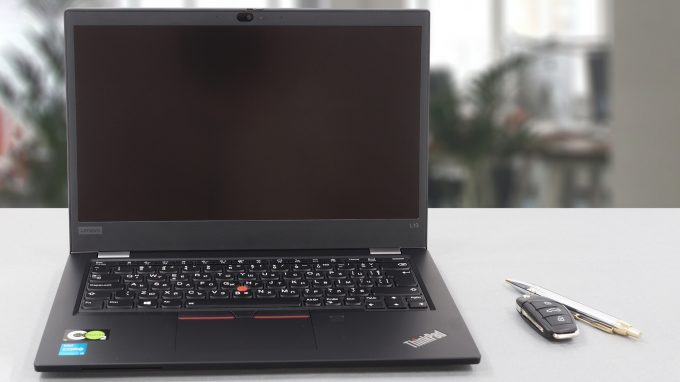 Ladies and gentlemen, today we have another business device. It’s the ThinkPad L13 Gen 2 and looks like a typical ThinkPad – robust, industrial, and stable. Some people might get pretty annoyed by the similarity between most devices of this series, but at the end of the day it comes down to brand recognition.
Ladies and gentlemen, today we have another business device. It’s the ThinkPad L13 Gen 2 and looks like a typical ThinkPad – robust, industrial, and stable. Some people might get pretty annoyed by the similarity between most devices of this series, but at the end of the day it comes down to brand recognition.
Interestingly, there is a “CO2 Compensated” sticker on the palm rest area of the device. This reveals Lenovo’s intentions and efforts in decreasing its carbon footprint by running different projects. Ultimately, they offer business consumers the chance to participate and therefore compensate for their carbon footprint.
Back to the laptop, it comes equipped with the entire Tiger Lake lineup. Ultimately, this means that your ThinkPad won’t be a slouch. Well, just on paper. On the other hand, it is a bit unfortunate to see that the manufacturer is still offering a business laptop in 2021 with a 768p TN panel as a base option. Respectively, you can choose a 1080p IPS panel, with or without touch sensitivity.
You can check the prices and configurations in our Specs System: https://laptopmedia.com/series/lenovo-thinkpad-l13-gen-2-intel/
Contents
Specs Sheet
- HDD/SSD
- 以至于 2000GB SSD
- M.2 槽
- 1x M.2 NVMe slot 看照片
- 内存
- up to 16GB
- 操作系统
- Windows 10 Pro, Windows 11 Pro, Windows 10 Home
- 蓄电池
- 46Wh, 46Wh, 4-cell
- 车身材料
- Plastic / Polycarbonate, Aluminum, Glass Fiber
- 外形尺寸
- 311.5 x 219 x 17.6 mm (12.26" x 8.62" x 0.69")
- 重量
- 1.39 kg (3.1 lbs)
- 端口和连接性
- 2x USB Type-A
- 3.2 Gen 1 (5 Gbps)
- 1x USB Type-C
- 3.2 Gen 2 (10 Gbps), Power Delivery (PD), DisplayPort
- 1x USB Type-C
- Thunderbolt 4, Power Delivery (PD), DisplayPort
- HDMI
- 2.0
- 读卡器
- MicroSD
- Wi-Fi
- 802.11ac/ax
- 蓝牙
- 5.0
- 音频插孔
- 3.5mm Combo Jack
- 特点
- 指纹识别器
- 网络摄像机
- HD
- 背光键盘
- 麦克风
- Dual Array Microphone
- 扬声器
- 2x 2W, Dolby Audio
- 光驱
- 安全锁槽
- Side Docking Connector
全部 Lenovo ThinkPad L13 Gen 2 (Intel) 配置
What’s in the box?
Inside the package, you will find the mandatory paperwork, as well as a 65W USB Type-C power brick.
Design and construction
Although this laptop doesn’t resemble the latest design features in the world. However, where it lacks visually, it makes up with premium materials. The lid is made out of aluminum, while the base is a glass fiber plastic composite. This makes the device resilient and light with the scales showing 1.39 kg. Its profile is a bit thick for a 13-incher this year, but still, 17.6mm is not too bad either.
Unfortunately, the lid can’t be opened with a single hand. Otherwise, the laptop looks okay for this year, although its top and bottom bezels are pretty thick. Above the matte display, you can see an IR face recognition system alongside an HD camera with a privacy shutter.
It is when you look at the keyboard, where you will realize how good the traditional ThinkPad design actually is. It has a backlight and a spill-resistant layer. But the icing on the cake is definitely the experience it provides. This is thanks to the long key travel and clicky feedback.
In its middle, you will notice the Red Nipple (dully called the TrackPoint by Lenovo). It is paired with a trio of buttons, placed above the touchpad. Respectively, the latter has a clicking mechanism built right into it, which works just fine. Additionally, the Mylar surface offers a decent gliding experience. By the way, right next to the touchpad, you will see the fingerprint reader.
Turn the laptop upside down to see the speaker cutouts and the surprisingly big ventilation grills. Heat exhaust happens through some vents on the back of the device.
Ports
On the left side of the notebook, there is a USB Type-C 3.2 Gen 2 port, followed by a Thunderbolt 4 connector, Ethernet extension connector, a USB Type-A 3.2 (Gen. 1) port, and an audio jack. Switch sides, and you will find the Kensington security slot, an HDMI 2.0 connector, a USB Type-A 3.2 (Gen. 1) port, a MicroSD card slot, and the power button.
Disassembly, upgrade options and maintenance
To take this laptop apart, you need to undo 9 captive Phillips-head screws. Then, the procedure is as easy as prying the bottom panel with a plastic tool.
The battery inside has a 46Wh capacity.
What we don’t like seeing on business notebooks is soldered memory. Unfortunately, this is the situation here, as the manufacturer provides versions of the device with 4, 8, and 16 GB of DDR4 RAM. Respectively, the storage is comprised of one M.2 PCIe x4 slot.
As for the cooling, there is one heat pipe, connected to a medium-sized heat sink.
Display quality
Lenovo ThinkPad L13 Gen 2 is equipped with a Full HD IPS panel, Chi Mei N133HCE-EAA (LEN4094). Its diagonal is 13.3-inch (33.78 cm), and the resolution – 1920 х 1080p. Additionally, the screen ratio is 16:9, the pixel density – 166 ppi, their pitch – 0.153 х 0.153 mm. The screen can be considered Retina when viewed from at least 53 cm (from this distance, the average human eye can’t see the individual pixels).
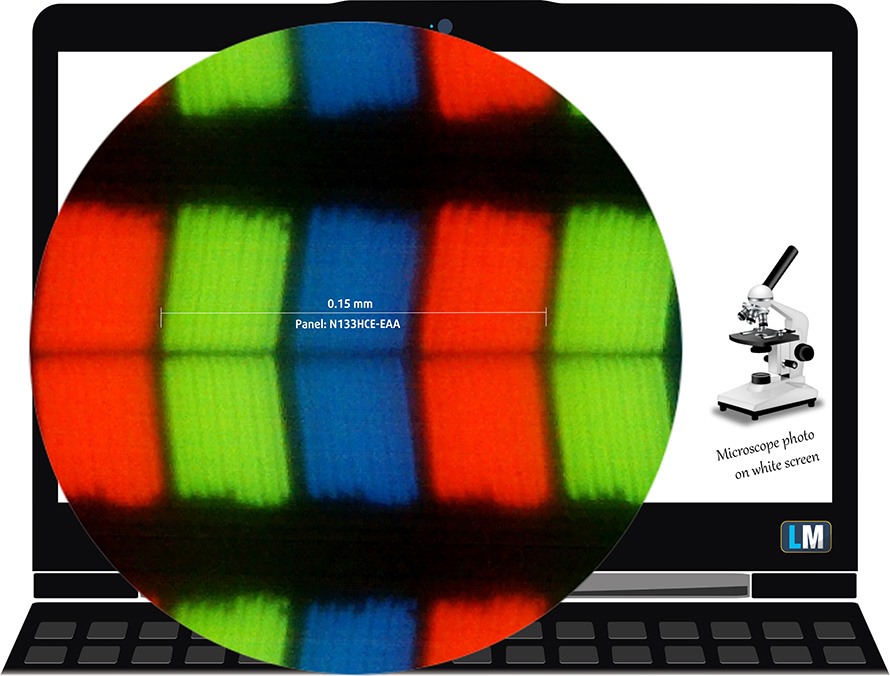
Viewing angles are comfortable. We offer images at different angles to evaluate the quality.

The maximum measured brightness is 258 nits (cd/m2) in the middle of the screen and 247 nits (cd/m2) average across the surface with a maximum deviation of 8%. The Correlated Color Temperature on a white screen and at maximum brightness is 7100K – colder than the 6500K temperature for sRGB.
In the illustration below you can see how the display performs from a uniformity perspective. The illustration below shows how matters are for operational brightness levels (approximately 140 nits) – in this particular case at 73% Brightness (White level = 143 cd/m2, Black level = 0.11 cd/m2).
Values of dE2000 over 4.0 should not occur, and this parameter is one of the first you should check if you intend to use the laptop for color-sensitive work (a maximum tolerance of 2.0 ). The contrast ratio is good – 1280:1.
To make sure we are on the same page, we would like to give you a little introduction to the sRGB color gamut and the Adobe RGB. To start, there’s the CIE 1976 Uniform Chromaticity Diagram that represents the visible specter of colors by the human eye, giving you a better perception of the color gamut coverage and the color accuracy.
Inside the black triangle, you will see the standard color gamut (sRGB) that is being used by millions of people on HDTV and on the web. As for the Adobe RGB, this is used in professional cameras, monitors, etc for printing. Basically, colors inside the black triangle are used by everyone and this is the essential part of the color quality and color accuracy of a mainstream notebook.
Still, we’ve included other color spaces like the famous DCI-P3 standard used by movie studios, as well as the digital UHD Rec.2020 standard. Rec.2020, however, is still a thing of the future and it’s difficult for today’s displays to cover that well. We’ve also included the so-called Michael Pointer gamut, or Pointer’s gamut, which represents the colors that naturally occur around us every day.
The yellow dotted line shows Lenovo ThinkPad L13 Gen 2’s color gamut coverage.
Its display covers 54% of the sRGB/ITU-R BT.709 (web/HDTV standard) in CIE1976.

Our “Design and Gaming” profile delivers optimal color temperature (6500K) at 140 cd/m2 luminance and sRGB gamma mode.
We tested the accuracy of the display with 24 commonly used colors like light and dark human skin, blue sky, green grass, orange, etc. You can check out the results at factory condition and also, with the “Design and Gaming” profile.
Below you can compare the scores of Lenovo ThinkPad L13 Gen 2 with the default settings (left), and with the “Gaming and Web design” profile (right).
The next figure shows how well the display is able to reproduce really dark parts of an image, which is essential when watching movies or playing games in low ambient light.
The left side of the image represents the display with stock settings, while the right one is with the “Gaming and Web Design” profile activated. On the horizontal axis, you will find the grayscale, and on the vertical axis – the luminance of the display. On the two graphs below you can easily check for yourself how your display handles the darkest nuances but keep in mind that this also depends on the settings of your current display, the calibration, the viewing angle, and the surrounding light conditions.
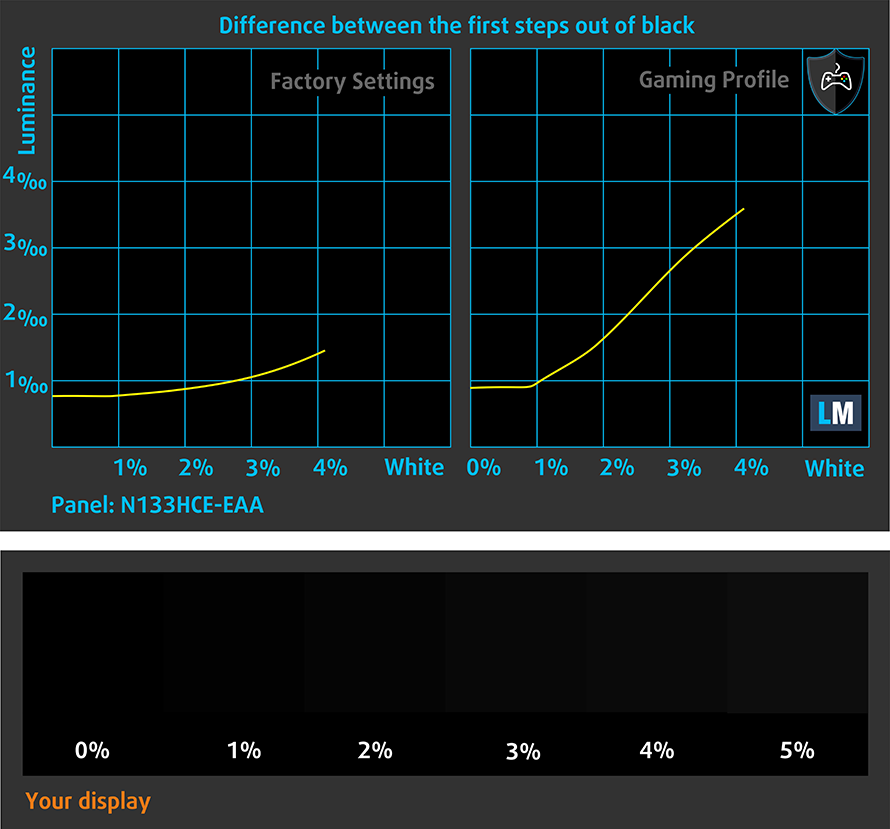
Response time (Gaming capabilities)
We test the reaction time of the pixels with the usual “black-to-white” and “white-to-black” method from 10% to 90% and vice versa.
We recorded Fall Time + Rise Time = 19 ms.

After that, we test the reaction time of the pixels with the usual “Gray-to-Gray” method from 50% White to 80% White and vice versa between 10% and 90% of the amplitude.
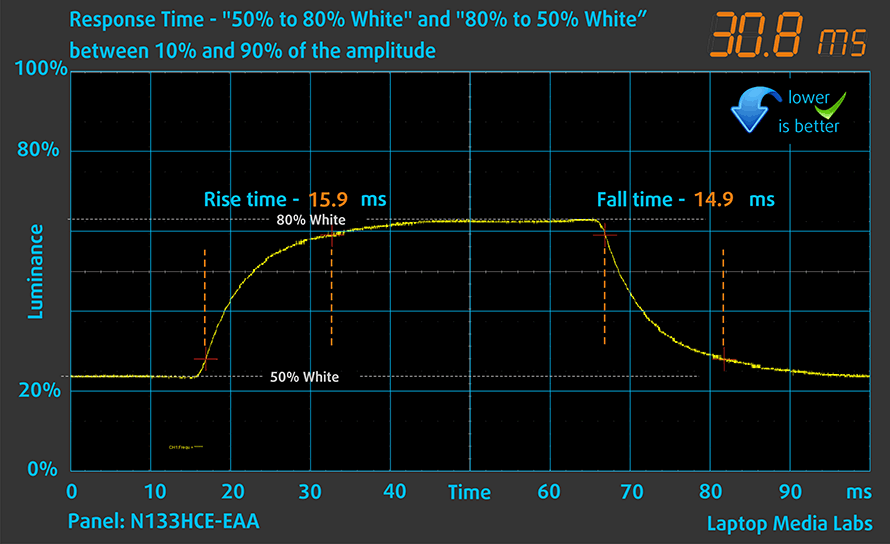
Health impact – PWM / Blue Light
PWM (Screen flickering)
Pulse-width modulation (PWM) is an easy way to control monitor brightness. When you lower the brightness, the light intensity of the backlight is not lowered, but instead turned off and on by the electronics with a frequency indistinguishable to the human eye. In these light impulses, the light/no-light time ratio varies, while brightness remains unchanged, which is harmful to your eyes. You can read more about that in our dedicated article on PWM.
Lenovo ThinkPad L13 Gen 2’s display uses PWM for up to 67 nits and with a very high frequency. This makes it comfortable for long periods of use.
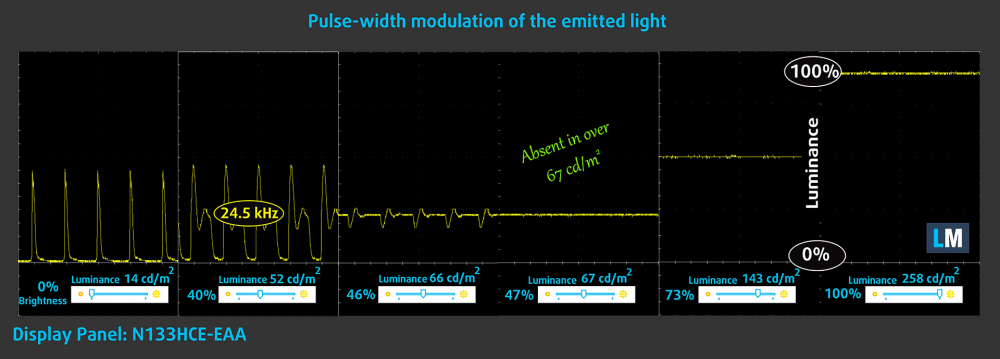
Blue light emissions
Installing our Health-Guard profile not only eliminates PWM but also reduces the harmful Blue Light emissions while keeping the colors of the screen perceptually accurate. If you’re not familiar with the Blue light, the TL;DR version is – emissions that negatively affect your eyes, skin, and your whole body. You can find more information about that in our dedicated article on Blue Light.
Buy our profiles
Since our profiles are tailored for each individual display model, this article and its respective profile package are meant for Lenovo ThinkPad L13 Gen 2 configurations with 13.3″ Chi Mei N133HCE-EAA (LEN4094) (FHD, 1920 × 1080) IPS panel.
*Should you have problems with downloading the purchased file, try using a different browser to open the link you’ll receive via e-mail. If the download target is a .php file instead of an archive, change the file extension to .zip or contact us at [email protected].
Read more about the profiles HERE.
除了获得高效和健康友好的配置文件,购买LaptopMedia的产品,您还可以支持我们实验室的发展,我们在实验室测试设备,以产生最客观的评论。

办公室工作
Office Work应该主要由那些花大部分时间看文本、表格或仅仅是浏览的用户使用。该配置文件旨在通过保持平坦的伽玛曲线(2.20)、本机色温和精确的色彩来提供更好的清晰度。

设计与游戏
本资料针对专业处理色彩的设计师,以及游戏和电影。设计与游戏》将显示面板发挥到了极致,使其在白点D65的网页和高清电视的sRGB IEC61966-2-1标准中尽可能准确。

以33%的折扣获得所有3份资料
Sound
Lenovo ThinkPad L13 Gen 2’s sound quality is decent. However, there are deviations across the entire frequency spectrum.
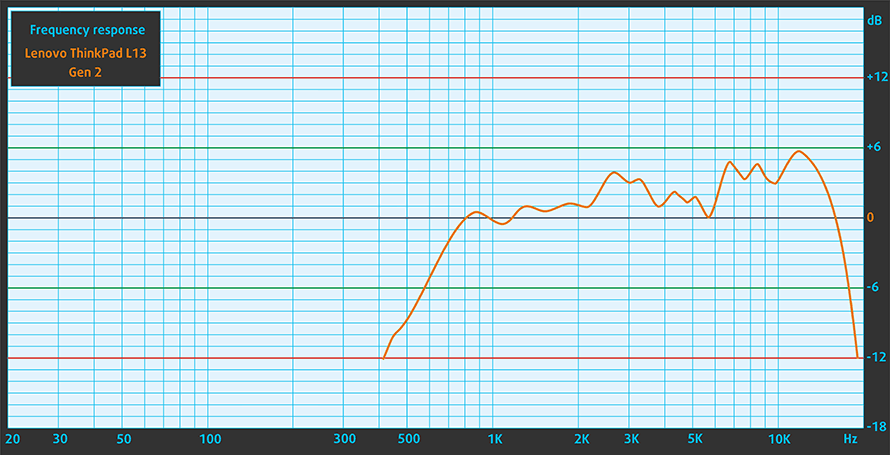
Drivers
All of the drivers and utilities for this notebook can be downloaded from here: https://pcsupport.lenovo.com/us/en/products/laptops-and-netbooks/thinkpad-l-series-laptops/thinkpad-l13-gen-2-type-20vh-20vj/downloads/driver-list
Battery
Now, we conduct the battery tests with Windows Better performance setting turned on, screen brightness adjusted to 120 nits and all other programs turned off except for the one we are testing the notebook with. This device’s 46Wh battery lasts for 8 hours and 33 minutes of Web browsing, and 6 hours and 50 minutes of video playback.
CPU options
There are a ton of choices you get with this device. Starting with the Celeron 6305, Core i3-1115G4, then Core i5-1135G7, Core i5-1145G7, and finishing with the Core i7-1165G7 and Core i7-1185G7.
GPU options
There is no dedicated graphics here. This leaves you with the UHD Graphics, Iris Xe Graphics G4, and the Iris Xe Graphics G7 with 80EUs and 96EUs.
Gaming tests

| CS:GO | HD 1080p, Low (Check settings) | HD 1080p, Medium (Check settings) | HD 1080p, MAX (Check settings) |
|---|---|---|---|
| Average FPS | 82 fps | 56 fps | 28 fps |

| DOTA 2 | HD 1080p, Low (Check settings) | HD 1080p, Normal (Check settings) | HD 1080p, High (Check settings) |
|---|---|---|---|
| Average FPS | 66 fps | 42 fps | – fps |
Temperatures and comfort
Max CPU load
In this test we use 100% on the CPU cores, monitoring their frequencies and chip temperature. The first column shows a computer’s reaction to a short load (2-10 seconds), the second column simulates a serious task (between 15 and 30 seconds), and the third column is a good indicator of how good the laptop is for long loads such as video rendering.
Average core frequency (base frequency + X); CPU temp.
| Intel Core i3-1115G4 (15W TDP) | 0:02 – 0:10 sec | 0:15 – 0:30 sec | 10:00 – 15:00 min |
|---|---|---|---|
| Lenovo ThinkPad L13 Gen 2 | 3.61 GHz (B+20%) @ 90°C @ 26W | 3.37 GHz (B+12%) @ 90°C @ 22W | 2.97 GHz @ 80°C @ 15W |
| MSI Modern 14 (B11) | 3.89 GHz (B+29%) @ 90°C @ 35W | 3.69 GHz (B+23%) @ 92°C @ 32W | 3.57 GHz (B+19%) @ 93°C @ 29W |
| Dell Inspiron 14 5406 2-in-1 | 3.49 GHz (B+16%) @ 99°C @ 27W | 2.79 GHz @ 89°C @ 17W | 2.61 GHz @ 86°C @ 15W |
| Lenovo ThinkPad E14 Gen 2 | 3.99 GHz (B+33%) @ 77°C @ 31W | 3.99 GHz (B+33%) @ 92°C @ 31W | 3.58 GHz (B+19%) @ 87°C @ 26W |
Adjusted to the temperature, the ThinkPad L13 Gen 2 performed pretty well. However, it is trailing behind the MSI Modern 14 (B11), and its cousin – the ThinkPad E14 Gen 2.
Comfort during full load
Unfortunately, the Extreme performance profile has the drawback of high temperatures and pretty high noise levels for a 13-inch business machine.
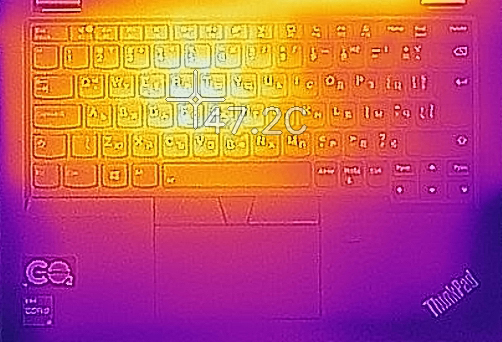
Verdict
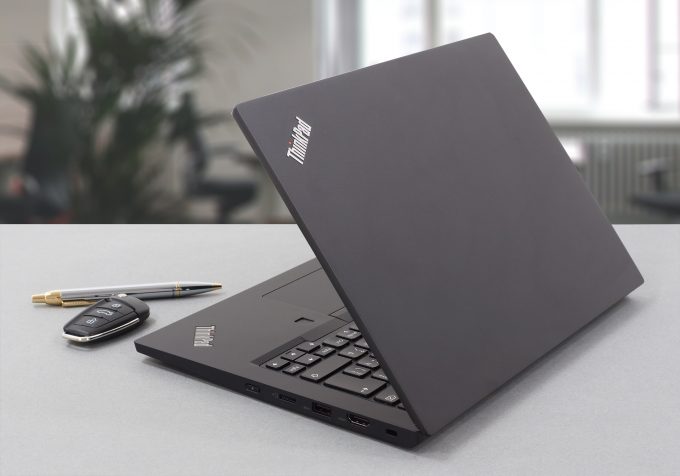 Lenovo says that this laptop is aimed at students, and people who work either at home or at the office. As such, it should provide a hassle-free experience and decent connectivity, combined with wide I/O. And a wide I/O it has. Among the numerous ports, you will find a Thunderbolt 4 connector, an Ethernet extension jack, and a MicroSD card slot.
Lenovo says that this laptop is aimed at students, and people who work either at home or at the office. As such, it should provide a hassle-free experience and decent connectivity, combined with wide I/O. And a wide I/O it has. Among the numerous ports, you will find a Thunderbolt 4 connector, an Ethernet extension jack, and a MicroSD card slot.
Moreover, the performance of our unit wasn’t bad, considering we had it with the Core i3-1115G4. Indeed, if your work comprises more intensive apps, you should pick a higher-tier CPU.
Lenovo ThinkPad L13 Gen 2’s IPS panel (Chi Mei N133HCE-EAA) has a Full HD resolution, comfortable viewing angles, and a good contrast ratio. Its backlight doesn’t flicker after 67 nits, and before that, it uses high-frequency pulsations, which are not particularly harmful. On the other hand, it covers only 54% of the sRGB color gamut.
Keep in mind that this laptop has one of the best keyboards for this size. Also, the device provides two levels of biometrics – fingerprint reader, and IR face recognition. Not on the last place – you get a privacy shutter, so no unwanted peeks through your camera.
Unfortunately, we were really disappointed to see that the memory is soldered to the motherboard. However, the use of full-blown DDR4-3200 RAM is good, as it means you get the full bandwidth, compared to the LPDDR4x memory.
So, if you happen to need a laptop that has decent security features, offers a bit of performance, and is built of high-quality materials, the ThinkPad L13 Gen 2 won’t disappoint you. Yes, it won’t be really visually appealing, but it does what it’s made for.
You can check the prices and configurations in our Specs System: https://laptopmedia.com/series/lenovo-thinkpad-l13-gen-2-intel/
Pros
- Doesn’t use aggressive PWM for brightness adjustment (Chi Mei N133HCE-EAA)
- Decent battery life
- Premium build quality
- Great keyboard
- IR face recognition + fingerprint reader
- Thunderbolt 4 connector, MicroSD card reader
Cons
- Soldered RAM
- Covers 54% of sRGB (Chi Mei N133HCE-EAA)
- Dated looks
